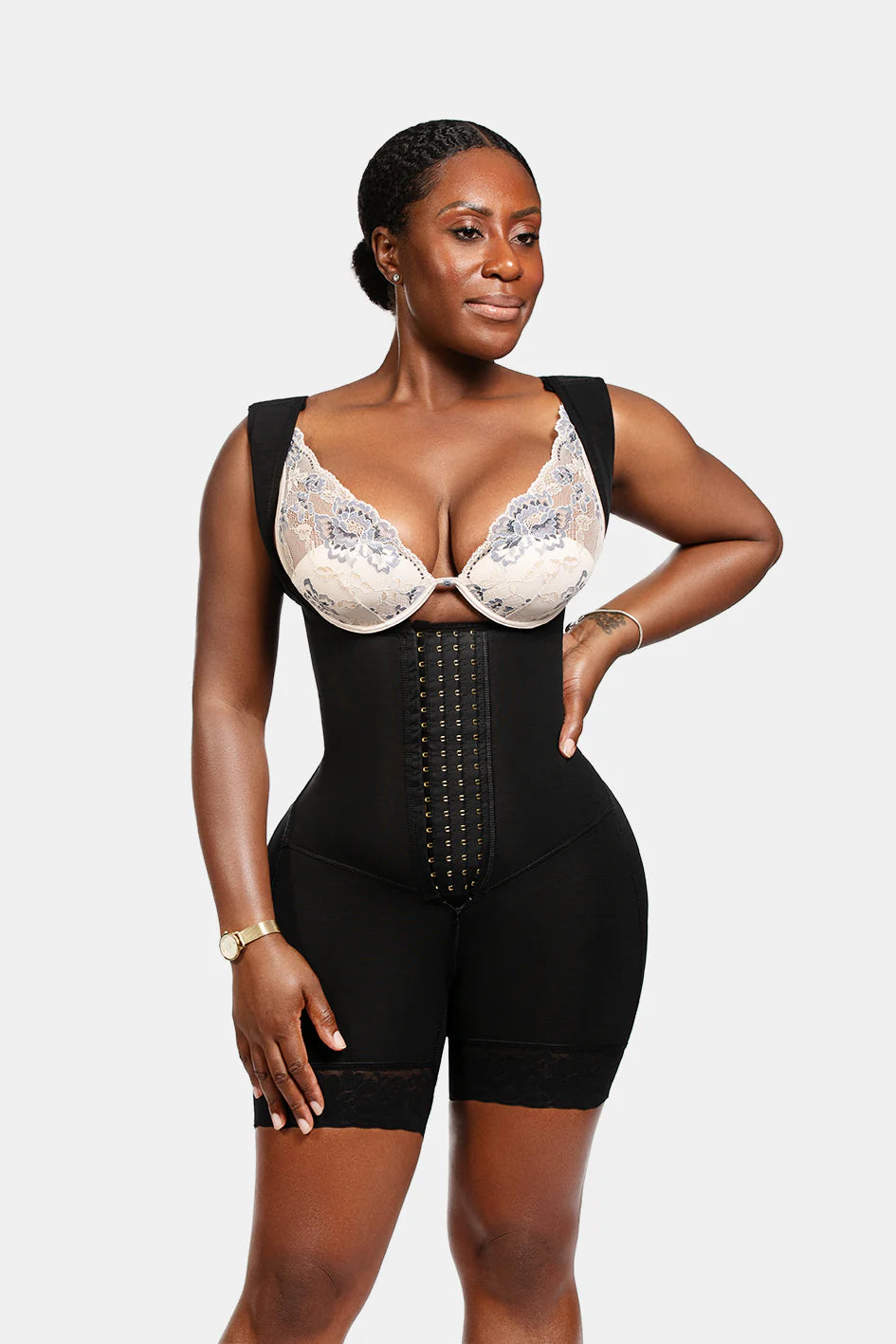
The Importance of Wearing a Compression Garment (Faja) After Liposuction, BBL or Tummy Tuck
Over the years, I’ve worked closely with patients recovering from surgeries like liposuction, BBL and tummy tucks, guiding them through the aftercare process and helping them achieve the best possible results. One of the most critical aspects of this journey is ensuring they have the right compression garment—or faja. I’ve seen firsthand how having the correct size and fit can make a dramatic difference in both the healing process and the final outcome.
Why the Right Faja Matters
Many of the women I work with undergo these procedures to enhance their curves or create a more defined shape. Because of this, having a faja that fits their unique proportions—especially their waist-to-hip ratio—and torso length is essential. A poorly fitted faja can hinder their recovery and even impact their results.
As part of my aftercare services, I often adjust or replace my patients’ compression garments to ensure they’re getting the right level of support. I’ve seen patients struggle with garments that are too tight in one area and too loose in another, or those that simply don’t accommodate their curves. A properly fitted faja makes all the difference—it supports healing, enhances their results, and, most importantly, keeps them comfortable throughout the process.
Designed for Curves: The Need for a Triple Sizing System
Women are naturally curvy, and procedures like liposuction and tummy tucks often enhance these curves further. However, many standard compression garments fail to account for the wide range of body shapes, especially when it comes to differences in waist-to-hip ratios and torso lengths. This is why a triple sizing system is essential when choosing a compression garment after surgery.
A triple sizing system considers:
- Waist Size: Ensures the garment provides firm and even compression to sculpt the midsection and support healing.
- Hip Size: Accommodates fuller hips, allowing for proper compression without squeezing or discomfort.
- Torso Length: Fits short, average, or long torsos to ensure the garment sits correctly without rolling, bunching, or creating gaps.
This comprehensive approach ensures a better fit for every individual, regardless of their unique body proportions or surgical goals.
Why a Triple Sizing System Matters
A compression garment that considers waist size, hip size, and torso length offers several key benefits:
- Even Compression Across All Areas: Proper fit ensures consistent pressure to reduce swelling, minimize fluid retention, and prevent complications like indentations or fibrosis.
- Eliminates Bunching or Rolling: Garments designed for the correct torso length sit securely on the body, avoiding discomfort and ensuring full coverage of the surgical area.
- Enhanced Results: By fitting the body’s natural proportions, a triple sizing system supports the healing process and ensures the enhanced curves settle smoothly and evenly.
What I’ve Learned from My Patients
Working with patients, I’ve witnessed how much of a difference the right faja makes—not just physically, but emotionally as well. Recovery from surgery can be overwhelming, and wearing a garment that fits poorly only adds to the discomfort and stress. On the other hand, a properly fitted faja boosts confidence and provides a sense of security, allowing patients to focus on their healing.
I’ve had patients tell me how much more comfortable and confident they feel after switching to a properly sized garment. They see the results they’ve worked so hard for coming together beautifully, and it’s incredibly rewarding to be part of that process.
